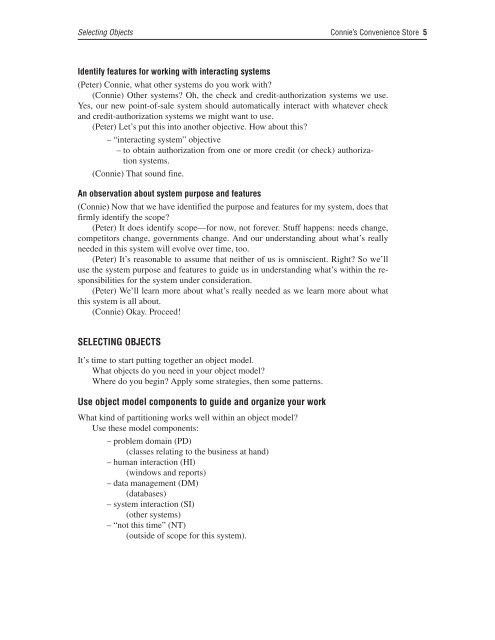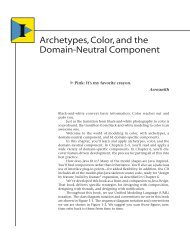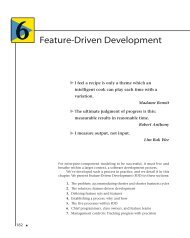Connie's Convenience Store - About Peter Coad
Connie's Convenience Store - About Peter Coad
Connie's Convenience Store - About Peter Coad
Create successful ePaper yourself
Turn your PDF publications into a flip-book with our unique Google optimized e-Paper software.
Selecting Objects Connie’s <strong>Convenience</strong> <strong>Store</strong> 5<br />
Identify features for working with interacting systems<br />
(<strong>Peter</strong>) Connie, what other systems do you work with?<br />
(Connie) Other systems? Oh, the check and credit-authorization systems we use.<br />
Yes, our new point-of-sale system should automatically interact with whatever check<br />
and credit-authorization systems we might want to use.<br />
(<strong>Peter</strong>) Let’s put this into another objective. How about this?<br />
– “interacting system” objective<br />
– to obtain authorization from one or more credit (or check) authorization<br />
systems.<br />
(Connie) That sound fine.<br />
An observation about system purpose and features<br />
(Connie) Now that we have identified the purpose and features for my system, does that<br />
firmly identify the scope?<br />
(<strong>Peter</strong>) It does identify scope—for now, not forever. Stuff happens: needs change,<br />
competitors change, governments change. And our understanding about what’s really<br />
needed in this system will evolve over time, too.<br />
(<strong>Peter</strong>) It’s reasonable to assume that neither of us is omniscient. Right? So we’ll<br />
use the system purpose and features to guide us in understanding what’s within the responsibilities<br />
for the system under consideration.<br />
(<strong>Peter</strong>) We’ll learn more about what’s really needed as we learn more about what<br />
this system is all about.<br />
(Connie) Okay. Proceed!<br />
SELECTING OBJECTS<br />
It’s time to start putting together an object model.<br />
What objects do you need in your object model?<br />
Where do you begin? Apply some strategies, then some patterns.<br />
Use object model components to guide and organize your work<br />
What kind of partitioning works well within an object model?<br />
Use these model components:<br />
– problem domain (PD)<br />
(classes relating to the business at hand)<br />
– human interaction (HI)<br />
(windows and reports)<br />
– data management (DM)<br />
(databases)<br />
– system interaction (SI)<br />
(other systems)<br />
– “not this time” (NT)<br />
(outside of scope for this system).




